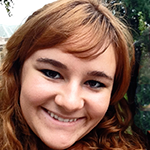Lindsay W.
$1,000 Resolve to Evolve Scholarship Winner - Junior

There should be no possible way for a lazy student to copy and paste their way out of a homework assignment. The purpose of school is to garner of knowledge, to push oneself to the limits, and to learn from the lessons. This is impossible to accomplish if one cannot even complete an assignment correctly, much less at all. It is an injustice to the hardworking and dedicated students who did the homework to see a slacker kick his feet up and lounge around as they slave away to complete Spanish terms or calculus problems at midnight. Clearly plagiarism should be an unacceptable way for students to cheat and get out of putting the time and effort into their education, but the question still remains of how to accomplish this.
When I work for hours on end on a research project or article for the newspaper, I expect others to do the same. The mutual dedication to our educations connects students, and it is a betrayal to the classmates, the teacher, and most importantly, oneself when one copies another’s work. There is no benefit to the student whatsoever. It definitely has become easier with the rise of technology making unlimited access to past students’ essays and labs only a click away. But this does not make it excusable. Ethical students should make the honorable choice and actually take the time to study. Shocking, I know.
Some teachers spend hours checking every word in a student’s essay to compare it to other sources, hoping to catch their blunder. Unfortunately for the professors, this is a ridiculously tedious task to perform for each of their 100 high school students. My math teacher had a brilliant and innovative approach, which was to post the solutions to our Geometry problems online, with all his work shown. This way we could check our answers to make sure we were doing it correctly without having to wait until the next day in class. You’d think that people would merely copy down his answers and pass it off as theirs. Well, every page or so he would put in a trick answer, one that was intentionally and blatantly wrong. If you understood the lesson and were honestly just correcting your work, you would be confused by his absurd answer and then ask him the following day. Then he would assure you that yes his answer was purposefully wrong, and to keep your original answer. For the cheaters, however, they were punished for trying to plagiarize his work. When the teacher corrected our homework packets, he would only look at specific problems: the ones with mistakes on the answer key. If someone had his fallacious work copied down, they received no credit because it was obvious they had tried to deceive him. His wrong answers online would be so far from the truth that there is no way anyone could have accidentally made them, so this method worked quite well for our class and students genuinely became so terrified of being caught that it was much more relaxing and satisfying to simply do the homework. Besides using a manual and creative approach like this, others can use websites such as turnitin.com, which checks for the percent plagiarized. Next to each submitted assignment, there’s a bar with the amount that the paper compared to his or her classmates, so this would end “sharing” work with friends. A renowned history teacher at my school employs this, and it is extremely effective at limiting the exchange of homework with a friend, because both perpetrators get caught easily. When their lies are revealed, they each receive 50-percent because two people turning in one essay means they each get half the grade, by his standards. This is a reasonable penalty, because the blunder certainly is big enough to affect their grade, but it will not absolutely destroy it, leaving hope to overcome it and improve.
However, there is a limit on how strict and obsessive a teacher should be. For example, my biology teacher was so rigorous when it came to plagiarism that she immediately gave us a zero if our vocabulary definitions were even remotely similar to other students’. This was extreme because the definitions were all gathered from the index of the textbook, and there are only so many ways to put biological terms such as “photosynthesis,” “osmosis,” and “ATP” in your own words. Although there needs to be stern rules when it comes to plagiarism, there is no need to be over the top. On creative writing assignments, there are certainly enough ideas in the world that no two should be remotely similar. On the other hand, it should be expected that everyone have the same definitions, because they all found an accurate and accepted explanation.
Plagiarism is still a huge issue within modern student’s lives today, with the possibility of copying and pasting very tempting. Teachers can deal with this through unique methods or they can always use technology to their advantage through websites to exterminate cheating from the classroom.

